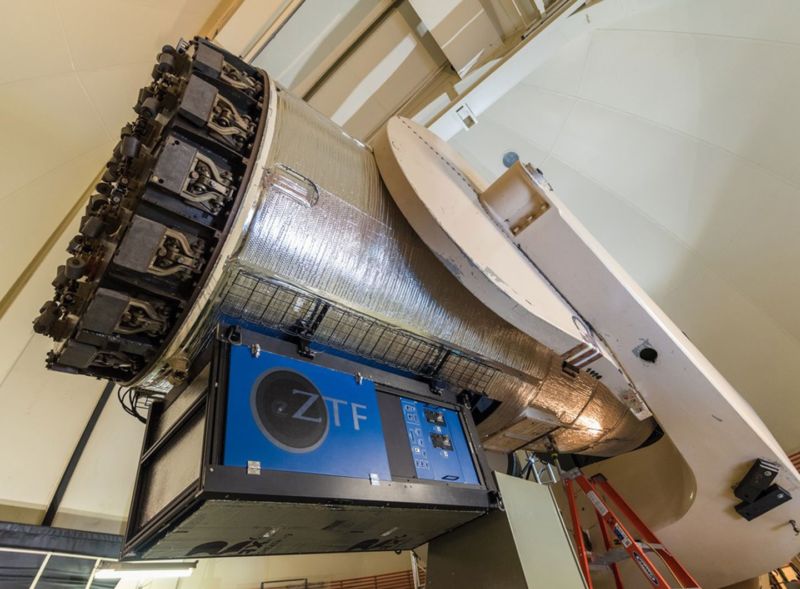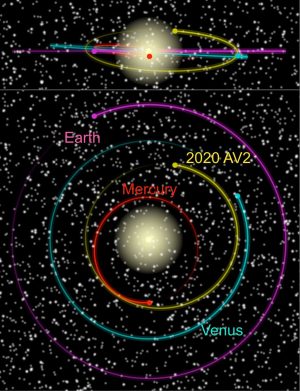"Getting past the orbit of Venus must have been challenging."
ERIC BERGER - 1/20/2020

Enlarge / The Zwicky Transient Facility at Palomar Observatory in California.
Caltech Optical Observatories
Astronomers have found nearly 1 million asteroids in our Solar System, with the vast majority located in the asteroid belt between Mars and Jupiter.
It is far rarer to find asteroids with orbits closer to the Sun, and especially inside the orbit of Earth, due to Jupiter's gravitational influence. There are only about 20 known asteroids with orbits entirely inside that of Earth's. They are called Atira asteroids.
Many of these Atira asteroids have orbits that are substantially tilted away from the plane of the Solar System, suggesting past encounters with Mercury or Venus.
A rare find
Until now, scientists have theorized that Vatira asteroids might exist—those with orbits inside Venus—but had yet to find one. They would be difficult to observe because their orbits would bring them close to the Sun, leaving only a short window to find them in the dusk or dawn sky. And also because presumably they are quite rare due to the gravitational challenge of squeezing into a stable orbit so near the Sun.

Enlarge / 2020 AV2 orbits entirely within the orbit of Venus.
Bryce Bolin/Caltech
But now astronomers have found a Vatira asteroid for the first time. The body, called 2020 AV2, was found earlier this month by the California Institute of Technology's Zwicky Transient Facility, and confirmed by other observatories around the world.
"Getting past the orbit of Venus must have been challenging," said George Helou, a Caltech astronomer and co-investigator at the Zwicky facility, in a news release. "The only way it will ever get out of its orbit is if it gets flung out via a gravitational encounter with Mercury or Venus, but more likely it will end up crashing on one of those two planets."
Astronomers say the asteroid spans about 1 to 3 kilometers in diameter and has an orbit tilted about 15 degrees relative to the plane of the Solar System. During its 151-day elongated orbit, it remains within the path of Venus while also approaching the orbit of Mercury. It likely was thrown into the intervenusian orbit by an encounter with another planet.
The Zwicky camera, attached to a telescope at Palomar Observatory in Southern California, is well suited to finding asteroids because it scans the entire sky rapidly and can observe asteroids during their short-lived appearances in the night sky.
FURTHER READING
No comments:
Post a Comment